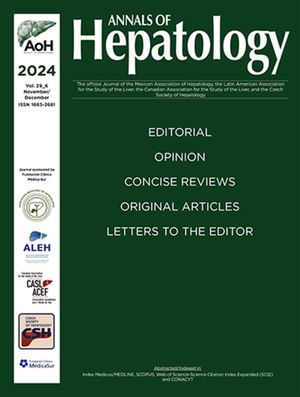
Abstracts of the 2023 Annual Meeting of the ALEH
More infoNo
Introduction and ObjectivesPatients with cirrhosis and septic shock face a high mortality rate, reaching up to 40%. There is limited literature from Latin America on this condition and associated mortality variables. The aim was to describe mortality in patients with liver cirrhosis and septic shock and analyze the associated variables.
Patients / Materials and MethodsA retrospective, observational, analytical study was conducted on patients with liver cirrhosis, who were diagnosed with septic shock, according to Sepsis-3 criteria, during their hospitalization in Hospital Clínico Universidad de Chile, between 2017 and 2023. A confidence level was set at 95% with a statistical significance of p = 0.05.
Results and DiscussionA total of 68 patients with septic shock were included, with a mean age of 61 years; the majority were male (57%). The primary etiologies of cirrhosis were alcohol-related (31%) and metabolic-associated (27%). Most patients had a Child-Pugh score of B or C (95%). The 28-day mortality rate was 38%, and the one-year mortality rate was 54%. These patients experienced 74 episodes of septic shock. Of these, 61% were associated with healthcare-related infections, and in 47% a Gram-negative microorganism was identified. Significant variables associated with 28-day mortality included a history of hepatic encephalopathy, low platelet count at admission, elevated total bilirubin, and higher severity scores (SOFA, Meld-Na, CLIF-SOFA). One-year survival was significantly higher among patients who received a liver transplant (HR 0.11, 95% CI 0.01 – 0.86, p = 0.036) (Figure 1).
ConclusionsMortality among cirrhotic patients with septic shock in Chile is high and comparable to international cohorts. Liver transplantation reduces mortality in this patient group. Higher SOFA, Meld-Na, and CLIF-SOFA scores at admission are associated with increased mortality.










